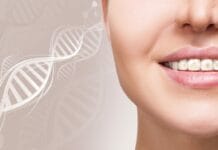Dental hygienists do patient handoffs multiple times a day. Some of us can do a handoff with our eyes closed. The handoff is one of the essential components of a dental appointment to make it efficient. It’s an asset as a team member to seamlessly summarize pertinent information and deliver a patient to the dentist for their exam.
A well-executed handoff can set the tone for the dentist-patient conversation. It guides the entire trajectory of the dialogue that will be exchanged, setting the outline for the conversation the dentist will be able to build on to further educate the patient on their oral health condition and treatment needs.
Why is a handoff so crucial for the practitioner and patient?
For starters, it indicates to the patient that we, as health care providers, listen to them and their concerns. Listening and translating information creates an understanding with the patient and limits misunderstanding and the unknown. Active listening should be a characteristic we all practice.
The seamless transition from dental hygienist to the dentist should be informative for the practitioner and educational for the patient. Again, the information being relayed reinforces the discussion in the operatory throughout the appointment. Patients deserve to be heard and understood while having their concerns addressed. When discussing the findings with the dentist, keeping the patient engaged in the delivery is encouraged.
Generally, hygienists spend the most time with patients who share a wealth of information. We learn much about our patients: their personal goals, fears, financial limitations, and dental literacy. When relaying the patient’s chief complaint and any findings, the patient is also present and able to hear in on clinical findings.
Keep in mind that patients typically tend to address concerns that are either related to pain or cosmetics. The importance of functionality (intake and digestion of food and water, speech, and respiration) and health may not be understood or a primary concern for some patients. Rather, the focus may be on clinical appearance and aesthetics, such as whiter teeth. That’s where providers are responsible for providing education and guidance, allowing the opportunity to discuss function, the disease process, and the importance of oral health and prevention.
Patients need to gain the knowledge or capability to assess other factors that may directly impact their oral health. It is in our hands to provide education on areas that lack attention and require care. Therefore, a well-scripted delivery of the information collected is an excellent form of education.
What are the benefits of a handoff?
First and foremost, we are bringing the dentist up to speed, starting with information like medical changes. An essential legality in dentistry is consistently and comprehensively updating medical histories and documenting patient updates that may impact oral and systemic health. For example, a new medical diagnosis that has oral health implications, such as diabetes, or a new prescription medication that could cause xerostomia and lead to higher caries risk. Any oral findings that may indicate a systemic issue and warrant a referral to the appropriate medical provider are pertinent information to share with the dentist.
Secondly, we are establishing a comfort zone for the patient. We create an open zone where dialogue is exchanged without fear of judgment or misguidance ‒ all while ensuring our body language as the provider is calm, welcoming, and neutral. Create an environment and a space that allows the patient to feel in control and heard.
When information is relayed from one practitioner to the other, the communication method should comprise terminology that the patient can fully comprehend according to their oral health literacy.
The handoff is a tool to pass critical and sometimes time-sensitive information to the dentist. Unfortunately, dentists do not have supersonic memory and require an update on the patient’s condition and pre-existing disease status. With the busy schedules standard in dental practices, these updates and summaries ensure we get all vital information when caring for the patient.
The summary of information could include:
- Welcome the dentist into the operatory, re-introduce the patient, and ensure all intraoral photos and radiographs are open on screen for a quick overview
- Medical history updates and changes
- Chief complaints or concerns that the patient provided
- Current periodontal status
- Areas of concern found during treatment
- Treatment that has been previously planned but not yet completed
In Closing
Delivering the patient in a structured manner during a handoff is helpful in creating a visual map for the dentist. We all know the dentist typically bounces from one operatory to another and requires a quick summary. We want to discuss such things as chief complaints and areas of concern we may have noticed during hygiene treatment and keep the dentist as informed as possible.
Establishing a handoff protocol or road map will limit missing information and increase patient case acceptance. Internal communication can help elevate patient care.
Before you leave, check out the Today’s RDH self-study CE courses. All courses are peer-reviewed and non-sponsored to focus solely on high-quality education. Click here now.












